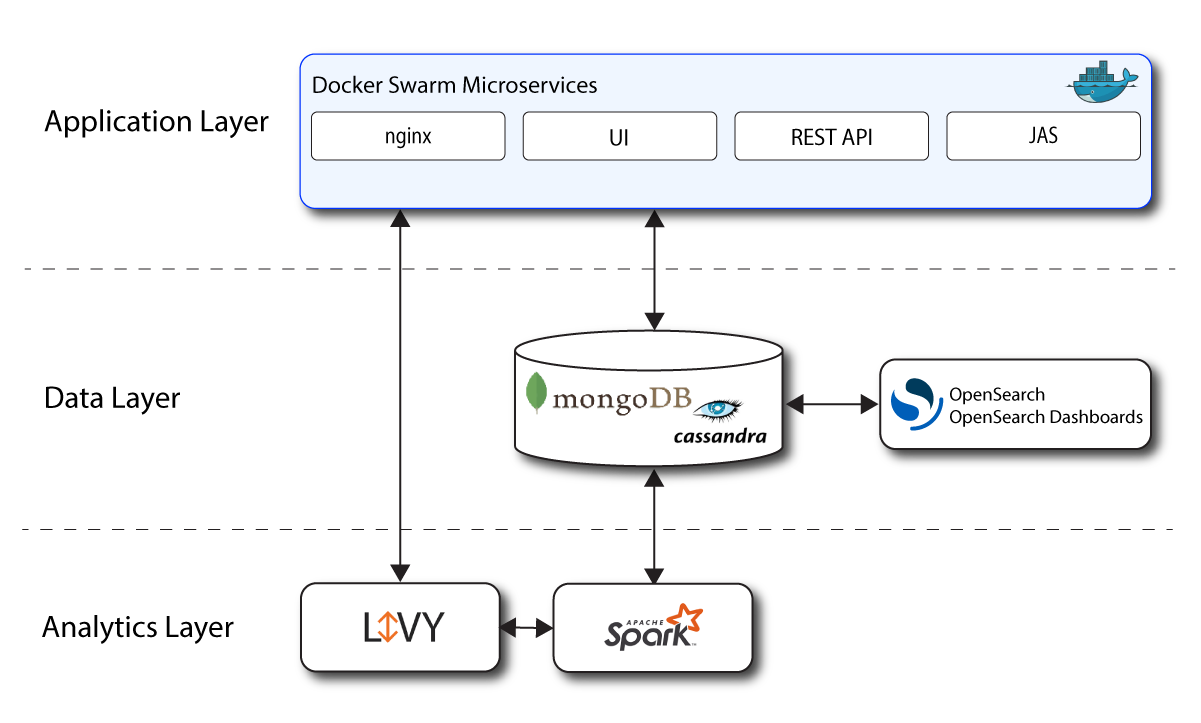Architecture in brief
Autonomous Identity has a powerful and flexible architecture that lets you deploy Autonomous Identity in any number of ways: single-node or multi-node configurations across on-prem, cloud, hybrid, or multi-cloud environments. The Autonomous Identity architecture has a simple three-layer conceptual model as follows:
-
Application Layer. Autonomous Identity implements a flexible Docker Swarm microservices architecture, where multiple applications run together in containers. The microservices component provides flexible configuration and end-user interaction to the deployment. The microservices components are the following:
-
Autonomous Identity UI. Autonomous Identity supports a dynamic UI that displays the entitlements, confidence scores, and recommendations.
-
Autonomous Identity API. Autonomous Identity provides an API that can access endpoints using REST. This allows easy scripting and programming for your system.
-
Backend Repository. The backend repository stores Autonomous Identity user information.
-
Nginx. Nginx is a popular HTTP server and reverse proxy for routing HTTPS traffic.
-
Apache Livy. Autonomous Identity supports Apache Livy to provide a RESTful interface to Apache Spark.
-
Java API Service. Autonomous Identity supports a private Java API Service (JAS) for a RESTful interface to the Cassandra or MongoDB database.
-
-
Data Layer. Autonomous Identity supports Apache Cassandra NoSQL and MongoDB databases to serve predictions, confidence scores, and prediction data to the end user. Apache Cassandra is a distributed and linearly scalable database with no single point of failure. MongoDB is a schema-free, distributed database that uses JSON-like documents as data objects. Java API Service (JAS) provides a RESTful interface to the databases.
Autonomous Identity also implements OpenSearch and OpenSearch Dashboards to improve search performance for its entitlement data. OpenSearch supports scalable writes and reads. OpenSearch Dashboards provides a useful visualization tool for your OpenSearch backend.
-
Analytics and Administration Layer. Autonomous Identity uses a multi-source Apache Spark analytics engine to generate the predictions and confidence scores. Apache Spark is a distributed, cluster-computing framework for AI machine learning for large datasets. Autonomous Identity runs the analytics jobs directly from the Spark main over Apache Livy REST interface.
 Figure 1. A Simple Conceptual Image of the Autonomous Identity Architecture
Figure 1. A Simple Conceptual Image of the Autonomous Identity Architecture